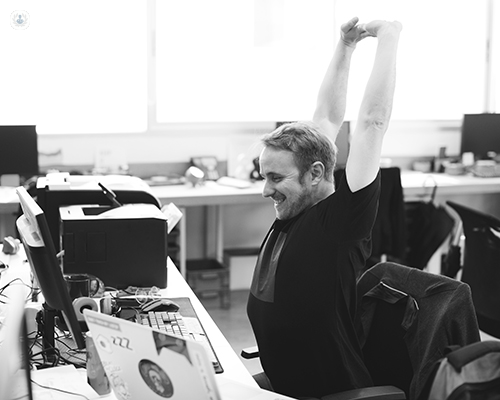Understanding your back pain
Autore:Back pain is one of the most debilitating and frustrating physical set-backs to experience, and the chances are that you might already experience back pain, or have had episodes in the past. So, are we all destined to live with and put up with back pain? Or can we do something about it? Dr Giancarlo Camilleri, a pain management expert of the Surrey Orthopaedic Clinic, explains what we can do ourselves to manage back pain, and when we should drag ourselves to the doctor about it.

How common is back pain?
About 80% of people will experience at least one episode of back pain in their lives and it represents one of the most common reasons people go to the doctor. Back pain is also the most common reason for missed days at work.
People are often surprised to learn that low back pain can start in a person’s early twenties and, for some individuals, it can continue on into adulthood.
What are the usual causes of back pain?
The most common reason for the development of back pain is muscle or spinal ligament strain, often caused by sudden awkward movements or repeated heavy lifting with poor technique, or in individuals who are in poor physical condition. Muscle spasms are often seen alongside sprains and strains.
Other general causes of back pain include:
- Disc degeneration; this is a naturally occurring process and causes the disc to lose its cushioning ability, making it less equipped to deal with forces through the spine.
- Arthritis affecting the spinal facet joints. This is more common over the age of 50-60.
- Tear or rupture in disc substance. Classically seen in individuals who describe a sudden onset of very severe back pain associated with a ‘popping’ sensation.
- Disc herniation. This occurs when the soft material in the centre of a disc bulges outwards causing back pain and pain radiating down the leg (sciatica).
- Skeletal irregularities, such as scoliosis (curvature of the spine). This irregularity of shape usually takes place over many years and is often not noticed until middle age. Back pain arises due to alteration of force and load on facet joints.
- Compression fractures of the vertebra. More common over the age of 60 and are associated with brittleness of bones (osteoporosis) that may occur with ageing.
What are everyday ways to manage back pain?
Management of back pain can be thought of from two perspectives; preventing back pain and how to manage a flare-up of back pain.
(i) Preventing back pain:
- Exercise, particularly regular low-impact exercise will strengthen your back muscles and abdominal core muscles.
- Flexibility in your upper legs and pelvis helps in maintaining a good posture and reduces mechanical stress through the spine seen with poor posture.
- Weight control
- Smoking cessation
- Posture awareness when standing and sitting
- At home or at work, make sure work surfaces are at a suitable height
- Avoidance of lifting heavy objects where possible or using correct lifting techniques when lifting can’t be avoided. Don’t twist whilst lifting.
(ii) Managing back pain:
Simple ways to try and manage your back pain at home include:
- Hot or cold packs. These may ease pain and muscle spasm and allow for greater mobility.
- Resume normal activity. Although this may sound counterintuitive, bed rest should be limited and a programme involving stretching exercises and a return to normal activities should be started as soon as possible as it will lead to greater flexibility and a quicker recovery.
- Physical therapy programmes to strengthen core muscles, improve mobility and flexibility. Evidence supports the use of yoga and pilates style exercises to ease longstanding low back pain.
- Simple over-the-counter painkillers in the short term to facilitate resumption of normal activities and commence physical therapy programmes. It is advised, however, that you consult with your pharmacist or doctor before using painkillers.
When should I worry about back pain?
Back pain is very rarely a sign of a serious medical problem and most back pain episodes will gradually settle over a few days to a few weeks using some of the self-care strategies discussed above.
You should seek assessment by your doctor if the back pain doesn’t settle on its own accord, or you have any of the following associated features:
- Severe back pain after an injury
- Aggravation of back pain with coughing
- Loss of control of bowel or urinary function
- Weakness, numbness or tingling in one or both legs
- Loss of sensation in the legs or around your perineum
- Fever
- Unexplained weight loss
- Background medical history of cancer, steroid use, osteoporosis


